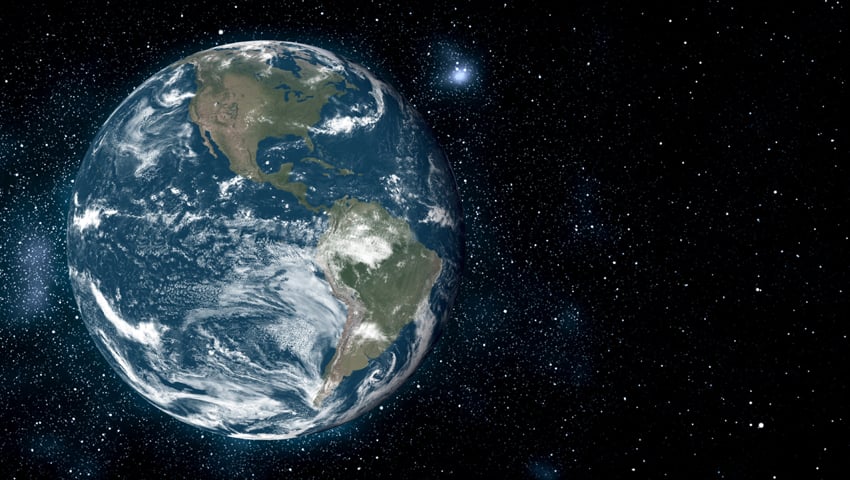IN A study published in the journal Nature, The Earth Commission says that “Humans are taking colossal risks with the future of civilization and everything that lives on Earth”.
Developed by more than 40 researchers from across the globe, the scientists deliver the first quantification of safe and just Earth system boundaries on a global and local level for several biophysical processes and systems that regulate the state of the Earth system.
For the first time, safety and justice for humanity on Earth is assessed and quantified for the same control variables regulating life support and Earth stability. Justice, assessed based on avoiding significant harm to people across the world, tightens the Earth system boundaries, providing even less available space for humans on Earth. This is extremely challenging, as the Earth Commission concludes that numerous of the safe boundaries are already crossed today.
“We are in the Anthropocene, putting the stability and resilience of the entire planet at risk. This is why, for the first time, we present quantifiable numbers and a solid scientific foundation to assess the state of our planetary health not only in terms of Earth System stability and resilience but also in terms of human wellbeing and equity/justice.” said Prof. Johan Rockström, Earth Commission Co-Chair, lead author and Director of the Potsdam Institute for Climate Impact Research.
“Justice is a necessity for humanity to live within planetary limits. This is a conclusion seen across the scientific community in multiple heavyweight environmental assessments. It is not a political choice. Overwhelming evidence shows that a just and equitable approach is essential to planetary stability. We cannot have a biophysically safe planet without justice. This includes setting just targets to prevent significant harm and guarantee access to resources to people and for as well as just transformations to achieve those targets” said co-author Prof. Joyeeta Gupta, Co-Chair of the Earth Commission, Professor of Environment and Development in the Global South at the University of Amsterdam and Professor of Law and Policy in Water Resources and Environment at IHE Delft Institute for Water Education.
The Earth Commission has quantified safe and just boundaries for climate, biodiversity, freshwater and different kinds of pollution to air, soil and water – and most have been breached.
For example, human activities are altering water flows, excessive amounts of nutrients are released into waterways from fertilizer use, and limited natural areas are left. This poses existential threats for a stable planet, to ecosystems and their vital contributions to people. The world has already passed the safe and just climate boundary, which is set at 1°C above pre industrial temperature levels, as tens of millions of people are already harmed by the current level of climate change.
“Our results are quite concerning: Within the five analysed domains, several boundaries, on a global and local scale, are already transgressed. This means that unless a timely transformation occurs, it is most likely that irreversible tipping points and widespread impacts on human well-being will be unavoidable. Avoiding that scenario is crucial if we want to secure a safe and just future for current and future generations,” said Rockström.
“The Earth system is in danger, as many tipping elements are about to cross their tipping points. So far, seventeen tipping elements are identified in scientific literature, among them, nine are cryosphere-related.
The Asia High Mountain Cryosphere (AHMC) is fast changing and close to becoming a new tipping element, which can impact the regional social-economy,” explained Prof. Dahe Qin, Co-Chair of the Earth Commission and Director of the Academic Committee, Chinese Academy of Sciences.
Global target setting has focused on climate change and limiting global warming well below 2°C and aiming at 1.5°C according to the Paris Agreement. Science also clearly shows there is a need to manage all the other biophysical systems and processes on Earth that determine the liveability on the planet.
“The Earth system is an interconnected set of biophysical processes that operate across regions and scales. Interference in one part of the world can have enormous impacts in other regions. Using Earth Systems Boundaries as an entry point for holistic and transformative action will support impactful and just progression towards a safe and just world.” said Wendy Broadgate, Earth Commission Executive Director and Future Earth, Global Hub Director, Sweden.
The Earth Systems Boundaries will underpin the setting of new science-based targets for businesses, cities and governments to address the poly-crises of: increasing human exposure to the climate emergency, biodiversity decline, water shortages, ecosystem damage from fertiliser overuse in some parts of the world coupled with lack of access elsewhere, and health damage from air pollution. In a time of increasing scrutiny and expectations, the resilience and success of businesses, cities and governments will depend on their ability to accurately measure and improve their impact on people and planet – and target opportunities within the finite limits of the planet.
“A safe and just transformation to a manageable planet, requires urgent, collective action by multiple actors, especially in government and business to act within Earth system boundaries to keep our life support system of the planet intact. Stewardship of the global commons has never been more urgent or important.” said Broadgate.
“With this global scientific assessment, we provide all stakeholders with scientific boundaries that can enable a prosperous and equitable world development on a stable planet, a better future for people and planet. This new science functions as input to the development of science-based targets. These can be adopted by cities, businesses and countries to address the systemic global crises of climate change, biodiversity loss, nutrient overloading, overuse of water, and air pollution.” concluded Rockström.
Report summaries on safe and just Earth system boundaries can be found here
The paper ‘Safe and just Earth system boundaries’ can be found here
